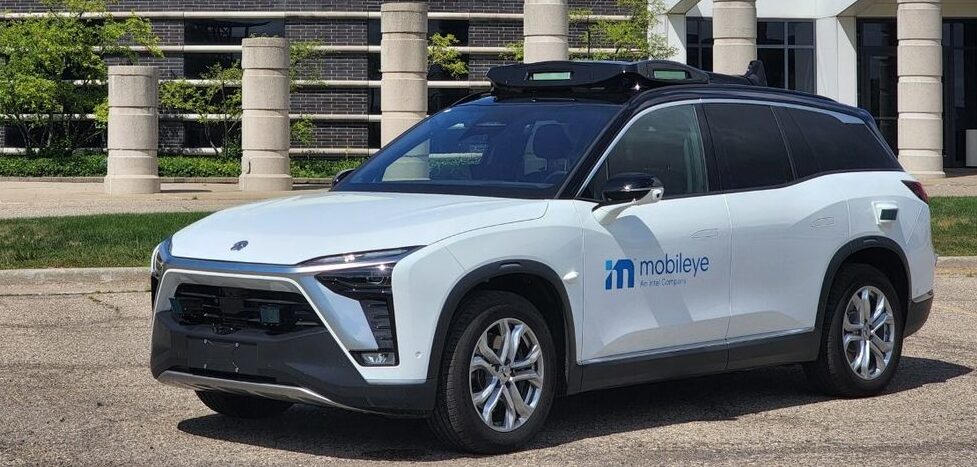A fully autonomous vehicle (AV) from Mobileye is being tested on the roads of Detroit armed with the company’s True Redundancy sensing subsystems. One subsystem is based on cameras while the other is based on radar and lidar. The test program marks the first time Mobileye has tested its Level 4 self-driving solution on roads within the USA.
The company’s technology has been integrated into the all-electric NIO ES8 SUV and includes several systems such as Mobileye’s True Redundancy sensing, Road Experience Management (REM) crowdsourced mapping and Responsibility-Sensitive Safety (RSS) driving policy.
Previously, Mobileye’s test vehicles have either used just cameras, or a combination of lidars and radars on their own. The commercial version of the company’s Mobileye Drive, however, utilizes both. This consists of a 360° suite of advanced sensing technology made up of 11 cameras, six radars, three long-range lidars and six short-range lidars with each being powered by EyeQ chips.
Using its True Redundancy approach, Mobileye’s camera subsystem operates independently of the radar/lidar subsystem and provides a robust sensing of road conditions and other traffic. The systems also deliver safety-critical redundancy as each subsystem complements one another.
Rather than deploying autonomous mobility in limited geographic areas, Mobilieye believes that self-driving technology will need to be widely usable across many different types of roads and situations. This means that its technology should be adaptable not just to different locations, but to different climates and driving cultures as well.
By using the REM-powered Mobileye Roadbook, Mobileye can gather data on the general behavior of traffic in different places, while RSS adapts the Mobileye Drive system to local behavior. Through its testing programs in Detroit, Mobileye Drive will be exposed to everyday driving challenges and unique local roadway characteristics – such as Michigan lefts – to verify the system’s capabilities.
“Our Detroit testing of Mobileye Drive is helping us ensure that the system can bring forward the global commercialization of autonomous driving technology and deliver on its promise to vastly improve road safety,” said Johann Jungwirth, senior vice president of autonomous vehicles, Mobileye. “We take the challenge of proving the capabilities of our technology seriously. By testing in the birthplace of the American automotive industry, we expect to make major progress toward our goals.”


